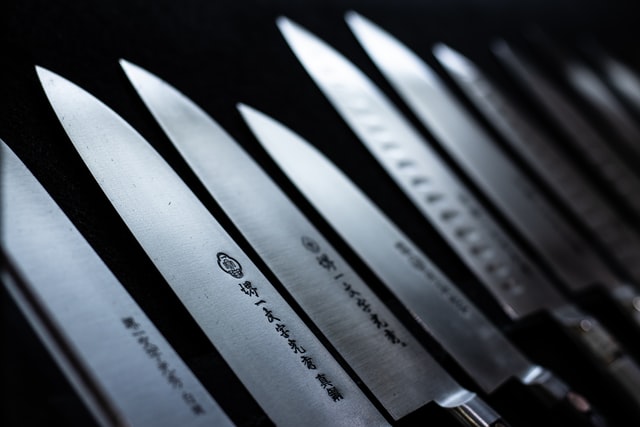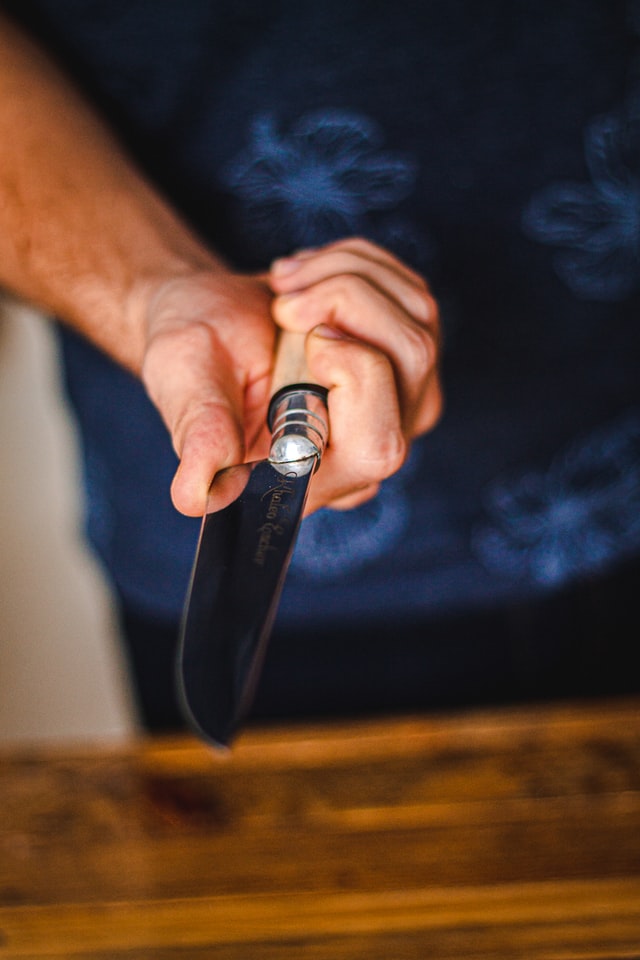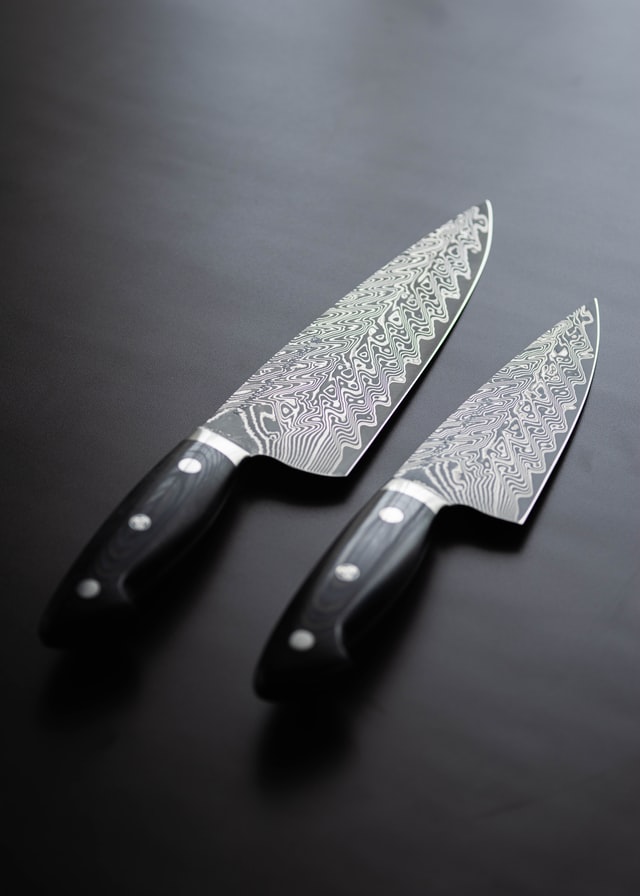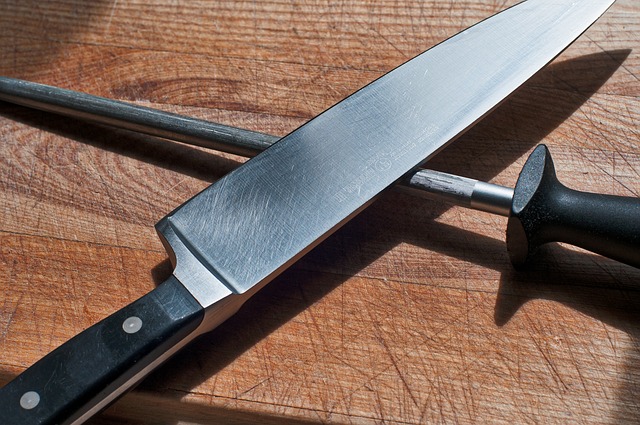
A chef’s knife may very well be the most important kitchen implement you will ever buy. There are so many out there to choose from and the prices range from ridiculously cheap to insanely expensive. It is something that you shouldn’t rush into. Articles like this are written to guide you in the process of easing into your first few passes. That’s right, if you really discover you enjoy cooking, you will go through your fair share of knives until you find the one that “fits.” This post will cover key things to look for in any knife you may be considering, the two main styles of knives and some things you should never do with any of the knives you eventually buy. Enough of this preamble, let’s crack in!
Chef’s Knife: The Basics
If you ask ten experts what constitutes a superb chef’s knife, you’ll probably get ten different responses. There is no single correct answer in terms of knife weight, metal utilized, handle design and material, blade length, or much else.

Sharpness
What can we be certain of? To begin with, a knife should be sharp right out of the box. Sure, if you know how to use a whetstone, you can always repair an edge or adjust its profile to suit your needs, but that’s advanced stuff. Most home cooks will not make those kinds of adjustments, not immediately after purchasing the knife, and not for a long time afterwards. It’ll be a miracle if they take it to a local knife sharpener* once a year for a touch-up.
*Hopefully somewhere good, not one of those places where they grind all the metal away on a dry, coarse stone wheel.
Balance
A knife should also feel “balanced,” but that term is difficult to define in any absolute sense. It doesn’t mean that the handle and blade should be perfectly balanced when positioned on a fulcrum just where they meet. Again, it’s more personal than that—does the weight of the knife fall easily in your palm when you hold it? Does it appear to be working with you rather than against you? A variety of things can play a role in this, how big (or small) your hands are, how you prefer to hold the knife, and how you plan to use it. Some cooks prefer a knife that feels heavier in the handle, others prefer one that is slightly heavier in the blade, while yet others prefer the knife to float smoothly between the two.
Chef’s Knife: Quality Counts
Of course, regardless of price, every knife should be well-made. The quality of the steel should be legit, the blade straight, and the handles, whether made of wood, resin, or some sort of plastic, should be solidly built, with no gaps, corrosion, or other evident flaws. It’s surprising to know that you can find quality knives at almost any reasonable price point.

Blade Length
In terms of length, we stayed with knives with eight-inch blades, which is the most popular size for this review. Any shorter and you’re in utility-knife zone, but longer is definitely an option. An eight-inch blade should be adequate for most cooks, but others may prefer a longer, 10-inch blade. Even for those of us who prefer to work with an eight-inch or ten-inch knife, there are some tasks, such as slicing a large watermelon, that require a larger blade. Even so, an eight-inch knife can handle almost any job, especially the big ones.
Style
One of the first considerations to be made these days is whether to purchase a Japanese or Western knife. These phrases can be perplexing, so we’ll clarify how we’re using them in this review, as well as some of the key differences between the two.
Chef’s Knife: Japanese vs. Western
Disclaimer: The world of knives is sophisticated, with a vast array of metals, forms, edge geometries, build styles, and more that may rapidly overwhelm a consumer; I’m a professional, and even I can’t be bothered to delve into the nitty-gritty minutiae that some knife nerds do. Just keep in mind that there is an exception to practically every rule of thumb, and for nearly every firmly held belief, there is an opinion that states the opposite. We don’t need to get caught up in endless details, so let’s use broad strokes, which may lead to oversimplification. Keep this in mind before making a “Yes, but” comment or sending an email.

Western Chef’s Knives
The shape of the “chef’s” knife is originally Western. Traditional Western knives feature taller, thicker, heavier blades with a more pronounced curve. German-style chef’s knives are the most well-known, with larger, heavier blades that curve up slightly toward the tip. This results in a knife that is better suited to a rocking-chop motion, such as when mincing sensitive herbs by swaying the blade back and forth over a mound of tender herbs. Other European designed knives, such as French knives, feature a comparable chef’s-knife style that is just slightly less curved.
A double-bevel edge is another frequent feature of Western knives, which means that the edge tapers in evenly on both sides to a sharp tip, comparable to the letter V. This sharpening geometry sacrifices a little sharpness in exchange for a little more resilience. Western knives are also frequently produced with slightly softer steel, which makes sharpening easier and honing a more effective technique of maintenance (because the steel can more easily be bent back into alignment).
To Be Continued…
Thus concludes the first half of our little discussion about chef’s knives. I hope you have found some of the information useful, I know that I would have appreciated knowledgeable advice when I first started out. Part two opens the door on Japanese style chef’s knives. We also get into some of the most common mistakes many people make when it comes to dramatically shortening the functional lives of their knives. You can simply click here to jump straight to part two. I’ll see you in the next one!